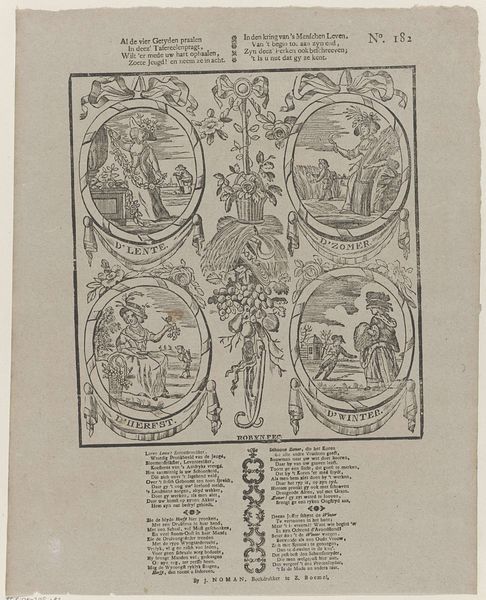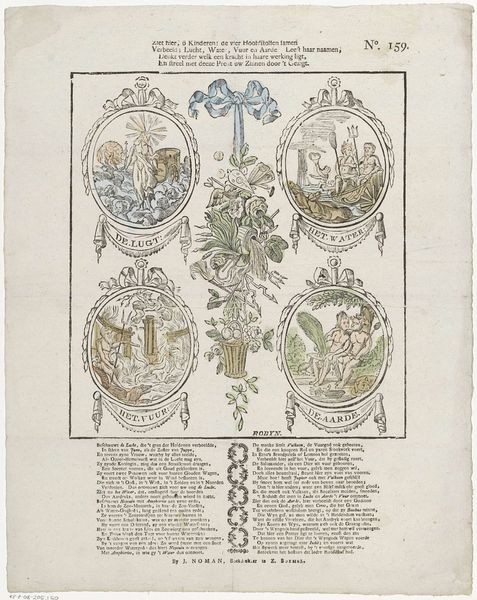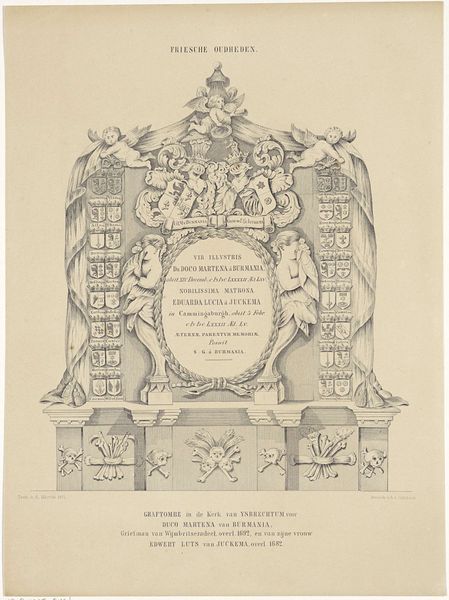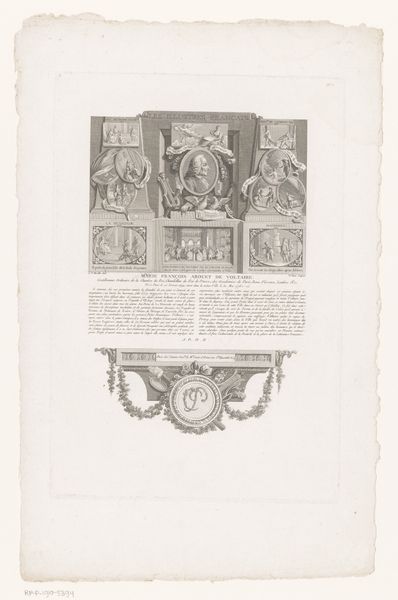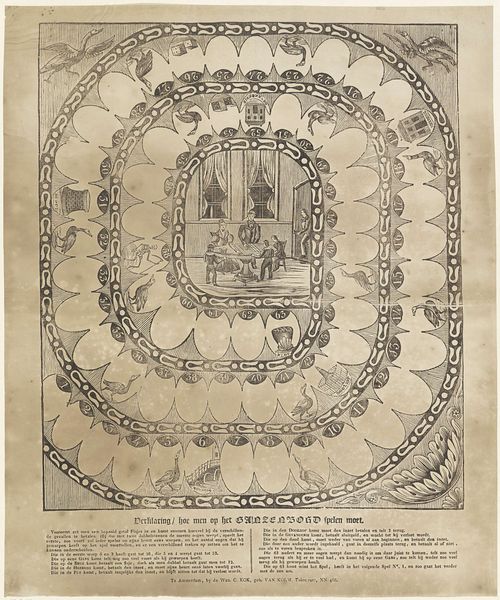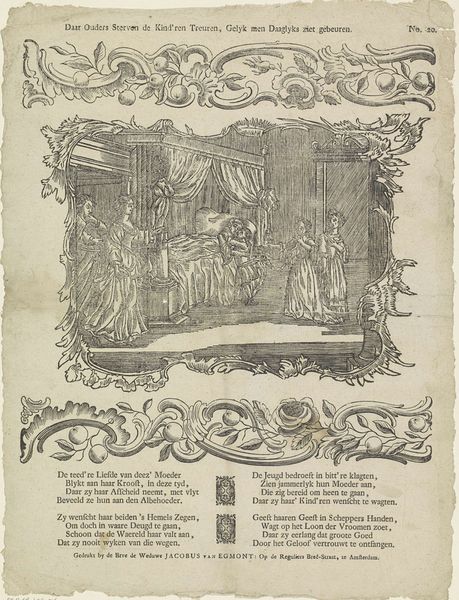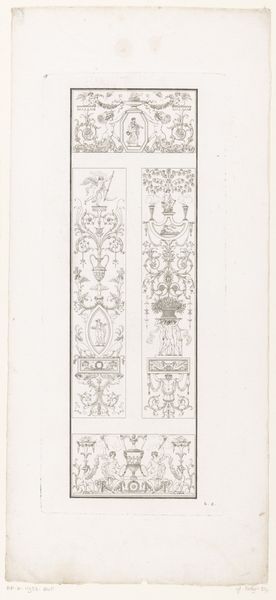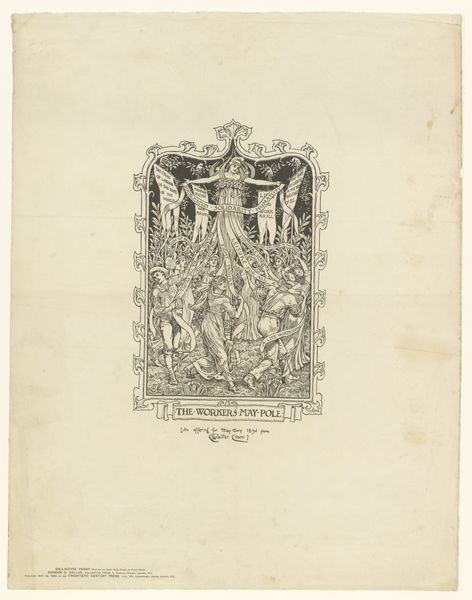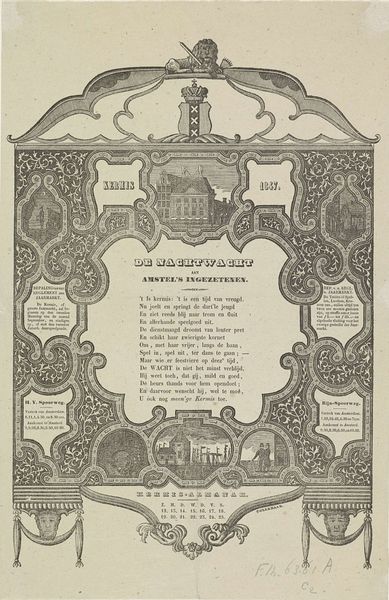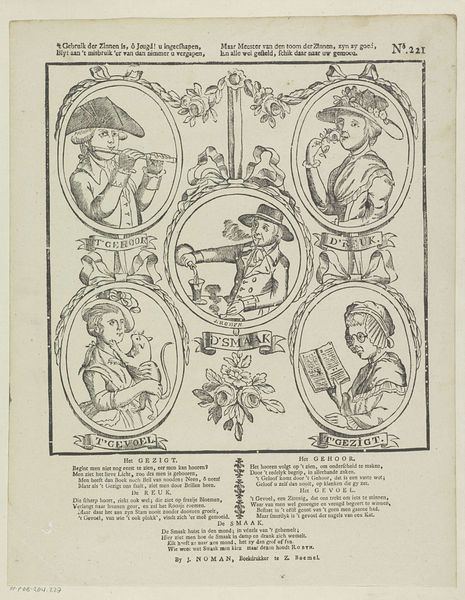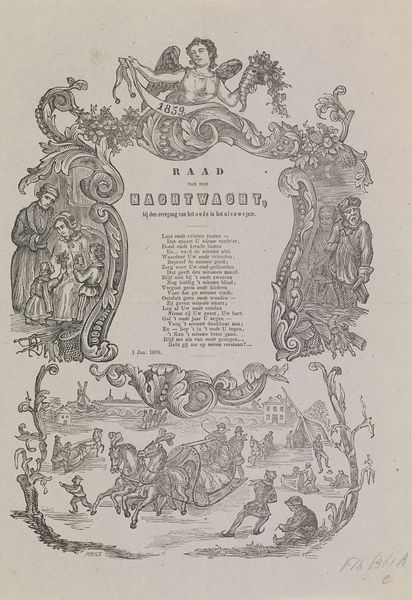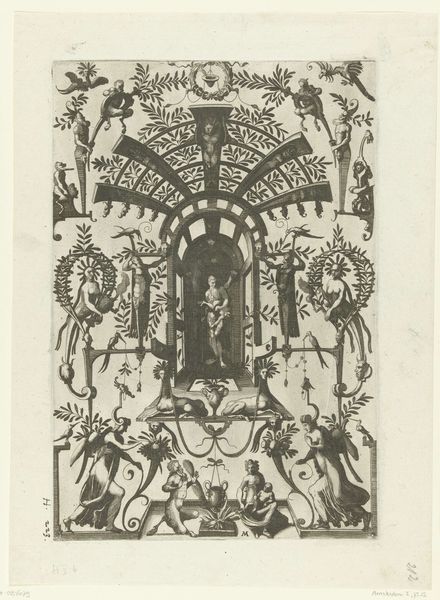
Ziet hier, ô kinderen! de vier hoofdstoffen samen / Verbeeld; lucht, water, vuur en aarde / Leest haar naamen, / Denkt verder welk een kracht in haare werking ligt, / En streel met deeze prent uw zinnen door 't gezigt 1806 - 1830
0:00
0:00
jrobyn
Rijksmuseum
Dimensions: height 395 mm, width 316 mm
Copyright: Rijks Museum: Open Domain
Curator: This print is fascinating. Titled "Ziet hier, ô kinderen! de vier hoofdstoffen samen...", it was made sometime between 1806 and 1830. The artist J. Robyn depicts the four elements in a really ornamental way. Editor: My first impression? A baroque science lesson! Each element is neatly packaged in these decorative frames, almost like specimens. But instead of diagrams, we get these dramatic little scenes. There is definitely something to be said about it aesthetically; it seems like an aesthetic study of binaries. Curator: Indeed. The print offers a snapshot of early 19th-century views on the natural world. Each scene uses allegory to teach. Note the representation of air, or "De Lugt" as it's labeled in the artwork, which shows an angel, which seems a bit bizarre to me. Then you have fire or "Het Vuur," showing this man almost writhing within a cave. Editor: Absolutely, that positioning within a cave could allude to Prometheus. Think about fire as a revolutionary force, often stolen or reclaimed from systems of power that desire to hoard knowledge and technology. Then air with this strange angelic figure gives me this impression that early climate theories, at the time of the image being printed, wanted to impose almost a moral judgement on what can otherwise be described through atmospheric forces. The baroque loved grand symbolism like this, the heavy ornamentation is perfect. Curator: Definitely, baroque wasn't subtle! Consider the visual hierarchy Robyn constructs; notice the arrangement, a vertical axis with 'air' at the top and 'earth' at the bottom with a central embellishment of flowers to act almost like an equilibrium between the depicted forces. It's clever how he positions these allegories. Editor: Right, that ordering tells its own story. The visual organization implies certain value judgments about each element and the history of people perceiving, organizing, and utilizing the natural world. This print isn't just art; it's a time capsule reflecting beliefs of power dynamics, the organization of resources, and society. Curator: It is a complex and curious work, far more layered than its simplistic instructive title might imply. Thanks for guiding me through these thoughts and musings. Editor: It's been my pleasure, really highlighting how art gives us these frameworks and blueprints, you know? Always a lot to unravel there.
Comments
No comments
Be the first to comment and join the conversation on the ultimate creative platform.
